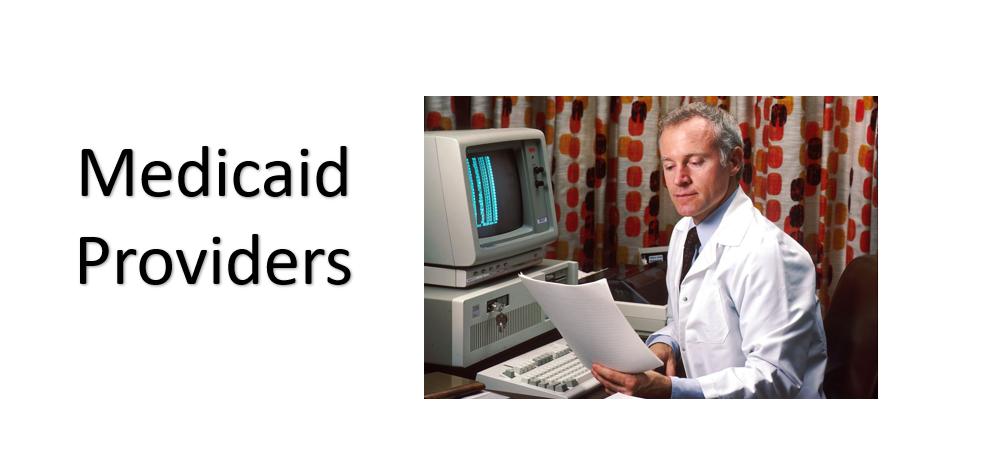MM Curator summary
A look into Medicaid participation by urologists reveals differences in managed care vs fee for service and across states.
The article below has been highlighted and summarized by our research team. It is provided here for member convenience as part of our Curator service.
A 2017 survey found approximately 75% of urologists accepted Medicaid managed care and 90% accepted Medicare Advantage, “suggesting some discernment when it comes including Medicaid managed care in a practice’s payment mix,” writes Ross E. Weber of the AACU.
Based on a partnership with Urology Times, articles from the American Association of Clinical Urologists (AACU) provide updates on legislative processes and issues affecting urologists. We welcome your comments and suggestions. Contact the AACU government affairs office at 847-517-1050 or info@aacuweb.org for more information.
Having contributed health policy updates to Urology Times® for more than 10 years, a decade-long search of the AACU’s archive yields only 1 headline that references Medicaid. In November 2014, when provisions of the Affordable Care Act related to Medicaid expansion were only 10 months old, the AACU addressed the pressure applied by state hospital associations for lawmakers to broaden eligibility requirements for their health care safety net programs. At the time, 25 states and the District of Columbia had approved laws to that end. Now, 7 years later, that number has increased to 38 states and the District of Columbia. This reminiscence is noteworthy in light of a recent report on the Medicaid-to-Medicare reimbursement ratio and statistics on Medicaid patients’ access to urological care.
On February 1, the journal Health Affairs published the latest results of an examination of Medicaid and Medicare physician fees dating back nearly 30 years. The authors, led by the Urban Institute’s Stephen Zuckerman, reported that Medicaid physician fees averaged 78% of Medicare physician fees for common non-primary care, non-obstetric procedures in 2019.
For all the tracked procedures, the Medicaid-to-Medicare fee index reached 0.72 in 2019, up from 0.66 in 2012 and very near the 2008, pre-Great Recession, ratio of 0.75. The study’s authors went on to relate these figures to physician practice patterns and public policy.
“Historically, low Medicaid fees have limited physicians’ participation in the program,” they wrote. Continuing, they expressed concern that Medicaid buy-in proposals in several states, “would pay physicians according to the state’s Medicaid fee schedule or negotiate a new fee schedule with those fees as a starting point. This approach would keep costs low but could limit physicians’ willingness to accept the new coverage.”
The 2017 American Urological Association (AUA) Census only barely bears out this claim. Medicaid covers about 1 and 5 people living in the United States, totaling approximately 40 million adults and 31 million children. Sixty-nine percent of those beneficiaries are enrolled in managed care plans and, according to the 2017 AUA Census, nearly 75% of urologists accept Medicaid managed care plans. That would seem to suggest that there isn’t a widespread lack of access to urologic care. Having said that, the same AUA survey finds 90% of urologists accept Medicare Advantage, thus suggesting some discernment when it comes to including Medicaid managed care in a practice’s payment mix.
A smaller study of urological surgeons indicates a bit more selectivity. Six hundred and fifty urologists surveyed by Overholser et al found 58.3% accepted some or all Medicaid insurance plans. Drilling down to individual states, the 2016 Overholser study reported the percentage of urologists accepting Medicaid varied by state, ranging from 10% to 90%.
That considerable variance in provider participation is not surprising given the sizable difference in physician fees state by state. According to Zuckerman’s 2017 report, Alaska and Montana Medicaid reimbursement is 126% of Medicare and 109% of Medicare, respectively, whereas Rhode Island and New Jersey meagerly reimburse physicians at 38% and 42% of the Medicare rate.
Florida urologist Kevin Lee, MD, FACS, takes Medicaid in his private practice and finds, “Some of us don’t mind the lower payments. The bigger problem, though, is the cost of oncological meds. Reimbursement for those therapies is always much lower than the price we paid in advance.”
Upon taking office, President Biden took steps to, in his way of thinking, support the Medicaid program. Many experts expect the Biden administration to reverse several of his predecessor’s policies, including block grant funding and work requirements. Jocelyn Guyer, managing director at Manatt Health, the firm where President Biden’s Centers for Medicare & Medicaid Services Administrator appointee most recently worked, is quoted by HealthPayerIntelligence as saying, “The administration is sending an incredibly powerful signal about where they’re heading on Medicaid policy and a return to viewing Medicaid as a key, foundational piece of the Affordable Care Act and a primary vehicle for coverage for people, particularly during the pandemic.”
Clipped from: https://www.urologytimes.com/view/medicaid-to-medicare-reimbursement-ratio-nears-pre-great-recession-level





